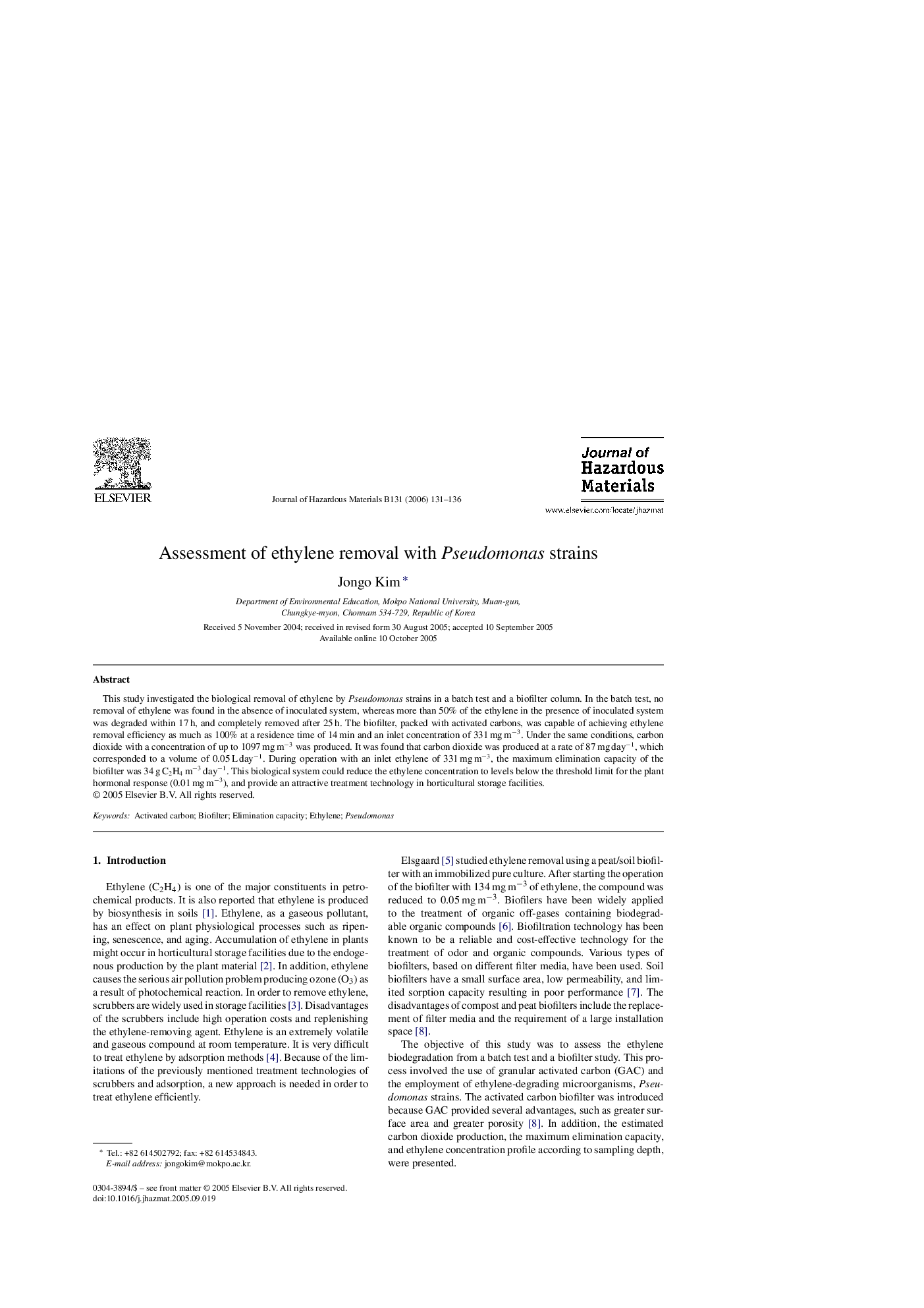| Article ID | Journal | Published Year | Pages | File Type |
|---|---|---|---|---|
| 585838 | Journal of Hazardous Materials | 2006 | 6 Pages |
This study investigated the biological removal of ethylene by Pseudomonas strains in a batch test and a biofilter column. In the batch test, no removal of ethylene was found in the absence of inoculated system, whereas more than 50% of the ethylene in the presence of inoculated system was degraded within 17 h, and completely removed after 25 h. The biofilter, packed with activated carbons, was capable of achieving ethylene removal efficiency as much as 100% at a residence time of 14 min and an inlet concentration of 331 mg m−3. Under the same conditions, carbon dioxide with a concentration of up to 1097 mg m−3 was produced. It was found that carbon dioxide was produced at a rate of 87 mg day−1, which corresponded to a volume of 0.05 L day−1. During operation with an inlet ethylene of 331 mg m−3, the maximum elimination capacity of the biofilter was 34 g C2H4 m−3 day−1. This biological system could reduce the ethylene concentration to levels below the threshold limit for the plant hormonal response (0.01 mg m−3), and provide an attractive treatment technology in horticultural storage facilities.
